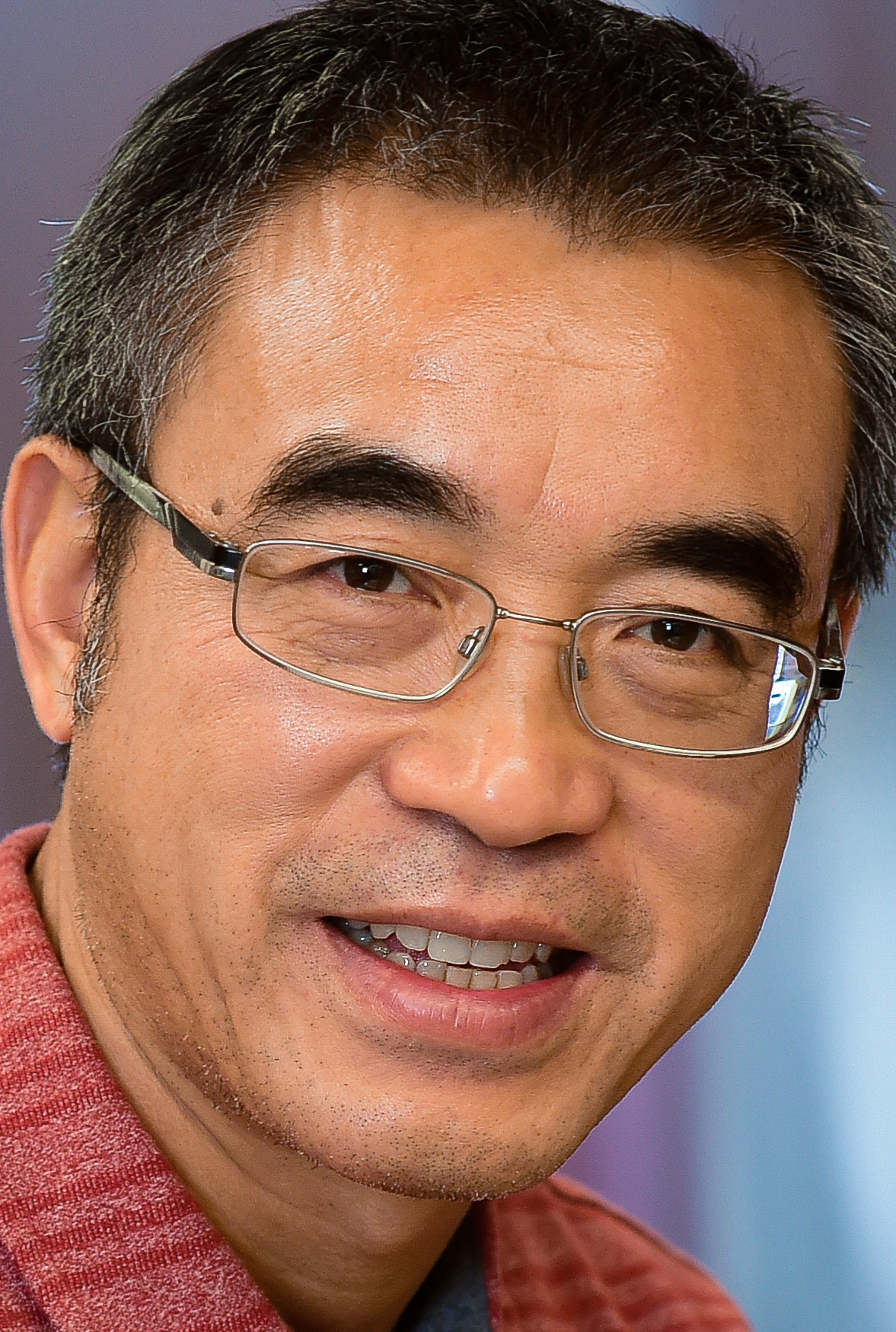Thursday, 7 June 201808:00 | Conference Registration, Materials Pick-Up, Morning Coffee, Tea and Breakfast Pastries | |
Session Title: Emerging Themes and Trends in 3D-Bioprinting in the Life Sciences |
| | 09:00 |  | Keynote Presentation 3D Tissue Construction by Microtissue Assembly
Shoji Takeuchi, Professor, Center For International Research on Integrative Biomedical Systems (CIBiS), Institute of Industrial Science, The University of Tokyo, Japan
|
| 09:45 |  | Keynote Presentation Biofabrication for Osteochondral Regeneration
Jos Malda, Professor of Biofabrication in Translational Regenerative Medicine, University Medical Centre Utrecht, Netherlands
Three-dimensional (3D) printing is already routinely used in the orthopedic clinic, e.g. for pre-operative models or intra-operative guides. Nevertheless, the shift towards 3D bioprinting has not yet occurred. This shift, however, does hold potential to advance the field of osteochondral regeneration. First, outer shapes of the biologically active construct can be personalized based on clinical images of the patient’s defect. Further, osteochondral or zonally organized constructs can be generated when printing with multiple bio-inks and relevant mechanical properties can be obtained by hybrid printing with thermoplastic polymers and hydrogels, as well as by the incorporation of reinforcing polymer meshes. Finally, bioprinting techniques contribute to the automation of the implant production process, reducing the risk of infection. This presentation will outline these opportunities, as well as some significant challenges that need to be addressed to prompt the shift from non-living implants towards living 3D bioprinted cartilage constructs in the clinic. |
| 10:30 | Morning Coffee Break and Networking in the Exhibit Hall | 11:15 |  | Keynote Presentation Biofabrication: A New Tool Set to Study Biology in 3D with Applications in Regenerative Medicine and in vitro Models
Lorenzo Moroni, Professor, Biofabrication for Regenerative Medicine, Maastricht University and Founder MERLN Institute for Technology-Inspired Regenerative Medicine, Netherlands
Organs are complex systems, comprised of different tissues, proteins, and cells, which communicate to orchestrate a myriad of functions in our bodies. Technologies are needed to replicate these structures towards the development of new therapies for tissue and organ repair, as well as for in vitro 3D models to better understand the morphogenetic biological processes that drive organogenesis. To construct tissues and organs, biofabrication strategies are being developed to impart spatiotemporal control over cell-cell and cell-extracellular matrix communication, often through control over cell and material deposition and placement. Here, we present some of our most recent advancements in biofabrication that enabled the control of cell activity, moving towards enhanced tissue regeneration as well as the possibility to create more complex 3D in vitro models to study biological processes. |
| 12:00 | High Resolution 3D Printing for Biomedical Applications
Aleksandr Ovsianikov, Professor, Head of Research Group 3D Printing and Biofabrication, Technische Universität Wien (TU Wien), Austria
3D printing opens exciting perspectives for the engineering of biomimetic 3D cell culture matrices, from classical scaffolds to cell-containing hydrogels. In this context, multi-photon lithography (MPL) represents an outstanding set of methods offering high spatial resolution, unmatched by other 3D printing approaches. An increasing portfolio of available materials enables utilization of the versatile capabilities of MPL, from producing complex volumetric 3D structures by means of cross-linking, to creating void patters within hydrogels already containing living cells. In this contribution, our recent progress on MPL for biomedical applications and the development of according materials will be presented. | 12:30 | Networking Lunch in the Exhibit Hall -- Meet the Exhibitors and View Posters | |
Session Title: Tissue Engineering and Bioprinting -- Research Trends and Applications Development |
| | 13:30 |  Automating 3D Biology Automating 3D Biology
Margaret Prendergast, Director of Bioengineering and Pharmaceutical Development, Allevi, Inc.
Biology exists in 3D, but it is most often studied in oversimplified 2D models. Extrusion biofabrication finally presents scientists with the capability to create complex 3D biological environments. Standardized, automated biofabrication allows for high-throughput versatility, demonstrating great potential for a variety of applications, including high-throughput screening, organ-on-a-chip fabrication, and personalized medicine. In this presentation, learn more about the limitless possibilities of extrusion biofabrication.
| 14:00 |  | Keynote Presentation 3D Bioprinting Scaffolds for Tissue Engineering Applications
Daniel Chen, Professor, University of Saskatchewan, Canada
The speaker will report his group’s recent work and achievements 3D bioprinting scaffolds for various tissue engineering applications, including the repair of peripheral nerve injuries, spinal cord injuries, articular cartilage, and myocardial infarction. |
| 14:45 |  | Keynote Presentation Multi-Scale Biomaterial Printing
Yan Yan Shery Huang, Professor of BioEngineering, University of Cambridge, United Kingdom
|
| 15:30 | Afternoon Coffee Break and Networking in the Exhibit Hall | 16:00 |  Technology Spotlight: Technology Spotlight:
3D Bioprinting of Human Hepatic Tissue Models
Hector Martínez, Chief Technology Officer, CELLINK, United States of America
Itedale Namro Redwan, Senior Principal Scientist/Team Leader, CELLINK, Sweden
In this study, we evaluate the bioprintability of human liver ECM under physiological conditions to assess the in vitro biocompatibility with human hepatic cells and to model liver fibrosis in vitro. Human hepatic cell lines (HepG2 and LX2) were gently mixed with HEP X™ bioink using a CELLMIXER® directly into a cartridge before bioprinting. Tissue printing was performed in a BIO X 3D printer under physiological conditions. Bioprinted tissues were maintained in 3D culture up to 14 days and exposed to TGFß1 for 6 days in order to promote an in vitro fibrogenic process. The resultant bioprinted liver tissue was analysed by viability assay, histology and gene and protein expression. The combination of human liver ECM bioink with liver cell types resulted in an increased cell viability and proliferation compared to control bioink. Pro-fibrogenic genes and proteins including aSMA (p<0.001) and pro-COL1 (p<0.001) were up-regulated in the LX2-laden constructs after 6 days of TGFß1 exposure. HepG2-laden constructs showed spontaneous formation of spheroids after 14 days in culture with up-regulation of albumin gene expression and protein secretion after 14 days compared to 7 days (p<0.001). This is the first report describing the bioprinting of human hepatic tissue using human liver ECM as bioink. This is a key advance in the development of cell-instructive bioinks for the study of liver disease and for the development of 3D hepatic tissue for transplantation.
| 16:30 |  Digital Biomanufacturing Enabling Multimode 4D Bioprinting Digital Biomanufacturing Enabling Multimode 4D Bioprinting
William G Whitford, Life Science Strategic Solutions Leader, DPS Group
3D bioprinting is the deposition of microchannels or droplets of a polymer and/or cell dispersion (bioink) to create 3D tissue-like structures that includes living cells. 4D bioprinting adds the extra dimension of time supporting the activity of smart, environmentally responsive biological structures and tissues. Many types of printing technologies are now used in bioprinting and each require appropriate manufacturing equipment, procedures and materials. Digital biomanufacturing orchestrates such concepts as increased monitoring, data handling, control algorithms, machine-learning and process modeling to a new level of process understanding, prediction and control. The IIoT, Big Data and Cloud technologies insure that the (historical and real-time) data being collected can be employed productively in richer data management, analysis and model generation. This leads to such values as more rapid process development as well as more comprehensive process control, automation and self-learning autonomation. Digital biomanufacturing will assist in the modeling and imaging required to recapitulate the (often personalized) complex and heterogeneous architecture of functional tissues and organs. It will also provide the required coordination and dynamic control of consequent complex tomographic information and models, multimode 3D printing and biofabrication processes, as well as such ancillary procedures as the environmental control of bioinks and nascent constructs.
| 17:00 | Putting 3D Biofabrication to the Use of Tissue Model Fabrication
Y. Shrike Zhang, Associate Bioengineer, Division of Engineering in Medicine, Harvard-MIT Division of Health Sciences and Technology, United States of America
The talk will discuss our recent efforts on developing a series of bioprinting strategies including sacrificial bioprinting, microfluidic bioprinting, and multi-material bioprinting, along with various cytocompatible bioink formulations, for the fabrication of biomimetic 3D tissue models. These platform technologies, when combined with bioreactors and bioanalysis, will likely provide new opportunities in constructing functional organoids with a potential of achieving precision therapy by overcoming certain limitations associated with conventional models based on planar cell cultures and animals. | 17:30 |  | Keynote Presentation Modular 3D Printed Microfluidic Systems: Design with Manufacturability in Mind
Noah Malmstadt, Professor, Mork Family Dept. of Chemical Engineering & Materials Science, University of Southern California, United States of America
Traditional approaches to microfluidic fabrication and modeling have relied on custom fabrication work flows that often focus on limited runs of one-off devices. This has led to a high cost that has limited the adaption of microfluidic systems for real-world applications. We have been developing an alternate approach to microfluidic fabrication that focuses on manufacturing modular components which are then assembled into microfluidic analytical systems. Each component can be manufactured in large production runs and the resulting manufacturing tolerances can be analyzed statistically. We have developed a stochastic model that uses these tolerances to facilitate a full design workflow that allows for us to specify the operational envelop of the completed system. This approach also allows for the direct incorporation of off-the-shelf electronic and mechanical components, providing functionality at low cost and using parts with well documented performance characteristics. While our current manufacturing workflow is based on stereolithographic 3D printing, this approach can easily be adapted to other low-cost manufacturing techniques, including injection molding, embossing, and machining. |
| 18:15 | Networking Reception with Beer and Wine. Engage and Network with Your Colleagues, and Connect with the Exhibitors | 19:15 | Close of Day 1 of the Conference. |
Friday, 8 June 201808:00 | Morning Coffee, Tea, Breakfast Pastries and Networking | |
Session Title: Applications of 3D-Bioprinting in Life Science Research and Medicine |
| | 09:00 | Promises and Future of Bioprinting Technic in Cosmetic Evaluation
Maité Rielland, Advanced Research Engineer, L’Oréal, France
Since the 80s, a long time before the 2013 European Union ban on animal testing for cosmetic products, L’Oréal has placed itself as a pioneer for reconstructed human skin. It became one of the first cosmetic companies testing its raw materials/actives/formulations on in-house reconstructed human skin and now selling them through Episkin, our production company in Lyon, France. Bioprinting is a great alternative to create new models of skin with a complexity that cannot be achieved only by human hands. One of the biggest potential advantages of this technology is the ability to place cells or biological material where it needs to be placed, opening a few doors for tissue engineering. It will be a tool for screening and model construction in the next few years and is already pushing us to think 3D in vitro models and Tissue Engineering differently. | 09:30 | Biofactory: Bioinks and Organ Bioprinting
Christophe Marquette, Research Director , Universite Lyon , France
Printing large pieces of tissue or organ will be within reach in a few years. Advances in 3D printing, bioprinting, biomaterials (bio-inks) but also complex tissue engineering and 3D tissue maturation are some of the key technologies that will make this happen. Integration of all these challenging sciences within one particular “Biofactory” will then be necessary to ensure a safe, efficient and successful future for regenerative medicine. | 10:00 | Developing Protective Strategies to Mitigate Cellular Disruption by Radicals During Photopatterning
Laura Hockaday Kang, Researcher, Institute of Cell Dynamics and Imaging, University of Münster, Germany
In this study, cells were pre-encapsulated in matrix using a microfluidic droplet generator prior to photopatterning into hydrogel structures. The goal was to determine if matrix shells around cells could protect from radical damage during lithographic fabrication and bioprinting. | 10:30 | Coffee Break and Networking in the Exhibit Hall | 11:00 | Hierarchical Biomaterials for Organ-on-a-Chip Devices and Tissue Engineering
Frederik Claeyssens, Senior Lecturer, Materials Science and Engineering, University of Sheffield, United Kingdom
Natural tissues and organs are typically structured in a hierarchical fashion, in which the Extra-Cellular Matrix (ECM) provides a microporosity to optimally support cell growth while larger scale structures (e.g. vasculature and boundary layers) are incorporated to support the function and structure of the tissue and organ. To mimic this multiscale structuring in synthetic biomaterials we combine additive manufacturing with self-assembly. In this structuring technique the internal porosity is governed by self-assembly and the macroscopic structure is constructed by additive manufacturing. Emulsion templating is used as self-assembly technique to produce materials with a high microscale porosity. These emulsions can subsequently be used as photocurable resins for stereolithography, producing user-defined macroscale structures with a tissue-like microporosity. The mechanical properties of these materials can be varied via the changing the monomer ratio within the resin. Additionally, biodegradable scaffolds can be fabricated via polycaprolactone-based resins. We produce these hierarchical structured material in 3D structured materials such as woodpile-style scaffolds, microspheres with controllable diameter and as 3D microenvironments that can be integrated in standard poly-dimethylsiloxane (PDMS) based microfluidics. These scaffolds we currently investigate as a platform for organ-on-a-chip based devices and tissue engineering. | 11:30 | Designer Gels for 3D Cell Culture and Bioprinting
Elia Lopez-Bernardo, Global Business Development Manager, Biogelx, Ltd., United States of America
Biogelx designs innovative peptide hydrogels for in vitro 3D culture. The gels are totally tunable; the stiffness can be adjusted depending on the cell type and specific requirements. This is applicable specially to stem cell research and regenerative medicine. | 12:00 | Networking Lunch in the Exhibit Hall -- Meet the Exhibitors and View Posters | 13:00 | Skin Tissue Manufacturing Using Bio-Printing
Fabien Guillemot, Chief Executive Officer, Poietis, France
Bioprinting has been defined as “the use of computer-aided transfer processes for patterning and assembling living and non-living materials with a prescribed 2D or 3D organization in order to produce bio-engineered structures serving in regenerative medicine, pharmacokinetic and basic cell biology studies”.
From a technological point of view, several bioprinting technologies have been developed so far. Recently, Laser-Assisted Bioprinting (LAB) technology has emerged as an alternative method to inkjet and bioextrusion methods, thereby overcoming some of their limitations (namely clogging of print heads or capillaries) to pattern living cells and biomaterials with a micron-scale resolution and high cell viability.
During this presentation, we will present current development on the industrialization of bioprinting process, namely in the context of manufacturing 3D skin models. | 13:30 | Generation of 3D In vitro Models of Neurodegenerative Diseases
Massimiliano Caiazzo, Assistant Professor, Utrecht University/University of Naples “Federico II”, Netherlands
Neurodegenerative disease dynamics is still elusive, especially the first steps that trigger neurodegeneration. To date the only available human models consist of 2D neuronal cultures, which cannot represent the complex of etiopathogenic mechanisms. In my lecture, I will discuss what are the available techniques to model a 3D human nervous system and how to improve them to study neurodegeneration in the human brain. | 14:00 | Development of New Polymers for Biofabrication: Hydrogels For 3D Printing and Resins for DLP
Matthew Baker, Assistant Professor, MERLN Institute, Maastricht University, Netherlands
Biofabrication methods provide great potential to go beyond 2D tissue engineering towards 3D functional tissues and organs for application in regenerative medicine strategies. However, despite this promise, the library of materials suitable for fabrication strategies remains relatively small and poorly customizable. Towards expanding the materials and strategies for biofabrication, two examples of customized polymers will be presented. Firstly, in order to facilitate 3D bioprinting of cell laden constructs, we have recently developed a synthetically modified alginate based “bioink” that can support cell growth, proliferation, and the extrusion based fabrication of 3D structures via light activated thiol-ene conjugations. This hydrogel’s material properties can be rationally tuned and can support the creation of constructs with multifunctional bioactive cues. Secondly, a simple example of customized resins for digital light processing (DLP) of culture environments and biofabricated objects will be presented. These poly(ester)urethane acrylate resins provide control over the mechanical properties and cell adhesion of the fabricated construct, while allowing high-fidelity feature production. Both platforms presented are developed towards the future creation of dynamic and stimuli-responsive 3D constructs aimed at investigating the effect of material and construct dynamics on engineered tissues. | 14:30 | How Is It Possible to Mimic the 3D Complexity of a Natural Tissue?
Giovanni Vozzi, Associate Professor, Dipartimento di Ingegneria dell’Informazione & Research Center ”E. Piaggio”, University of Pisa, Italy
A biological tissue is a composite material with “bottom-up” hierarchical structure that is closely related to its heterogeneous function. The extracellular matrix modulates biochemical and biophysical signalling, and its rigidity is an important micro-environmental parameter that regulates the spatiotemporal dynamics of intercellular signalling. For this reason, many studies are focused on fabricating scaffolds processed at multiple scales with structural and mechanical properties that are optimal for eliciting specific response or mimic those found naturally. These scaffolds have to present large surface areas that have appropriate topology and biochemical cues (e.g. ligands) at the nanoscale for tissue adhesion, while also exhibiting integral porosity to allow for the exchange of molecules that maintain cellular function. In this talk, the use of multiscale and multimaterial processes will be presented to develop 3D in vitro models of bone that can mimic the 3D complexity of natural tissue, with applications in the study of physio-pathological conditions and for the analysis of effects of different biomolecules and/or drugs on cell activities. The combination of different natural and synthetic biomaterials, also in form of hydrogels and as suspension of bioactive glasses, processed with several bio-printheads in order to mimic the multiscale topology of natural tissue will be presented. The biomimicry of biochemical cues, given by appropriate growth factors, and the modulation of mechanical properties will demonstrated. Limitations and opportunities of these in vitro models will be discussed. | 15:00 | Afternoon Coffee Break and Networking | 15:30 | Building 3D Architectures for Cardiomyocytes
Aylin Turgut, Researcher, University of Nottingham, United Kingdom
High-throughput in vitro drug screening will reduce the cost of drug manufacture and improve accuracy of cardiomyocyte response. Materials amenable to 2-photon lithography that support cardiomyocytes will provide information on cardiomyocyte response to differing architectures mimicking the cardiac environment. | 16:00 | Necklace-like Fiber Fabrication Via Melt Electrospinning Writing
Yingchun Su, Researcher, Aarhus University, Denmark
We fabricated necklace-like fibers through electrospinning. In the future, we want to use melt electrospinning writing (MEW) to fabricate scaffold with necklace-like structure. MEW is a new technology combining 3D printing and electrospinning which held potential for tissue engineering. | 16:30 | Close of Day 2 of the Conference |
|
